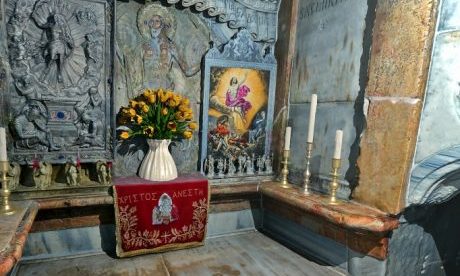There is no more sacred place in Christianity than the Church of the Holy Sepulcher in Jerusalem.
And now you can visit it — virtually, anyway — in the nation’s capital at the interactive “Tomb of Christ” exhibit of the National Geographic Museum that unifies cutting-edge science and technology with faith.
The science has been deployed to conserve and shed new light on the ancient building.
The faith stirs the feelings of every Christian who approaches those places where Our Savior suffered, died and rose again, according to a tradition that goes back until at least the fourth century.
The latest scientific tests confirmed the presence of rock-cut Jewish tombs dating back to the first century, when Jesus lived.
The sediment in samples from the mortar was measured for its most recent exposure to light using Optically Simulated Luminescence (OSL).
Contrary to many researchers who claimed that the shrine was built only 1,000 years ago at the time of the Crusades, the mortar and marble slab covering the original burial bed have now been found to date back to 345 B.C., when Roman Emperor Constantine built the shrine around the tomb, according to National Geographic.
The exhibit celebrates the recent preservation of the Edicule of the Holy Sepulcher built by Franciscan friars in 1555.
Led by an interdisciplinary group of engineers, researchers, stonemasons and professors from the National Technical University of Athens, the work began in 2016 and was completed in time for Easter 2017.
This precious complex has undergone many cycles of destruction and rebuilding since Constantine, the first Christian emperor, first visited in 325.
Constantine tore down a Roman temple that had been erected to counteract growing Christian fervor and built the first church on the site.
It was wrecked under Arab rule in the seventh century. In 1009, Fatimid Caliph Al-Hakim bi-Amr Allah ordered the church to be burned down. Earthquakes and fires wreaked further havoc. Each time, it was rebuilt.
The constant traffic of visitors and the destructive impact of water, humidity and soot from gas lamps and candles have undermined the stability of the building.
The stone walls of the Edicule were “starting to buckle outward,” according to National Geographic Society chief archeologist Fredrik Hiebert. Intervention was urgent. Continue reading
Source and Image:
- National Catholic Register article by Nora Hamerman, who writes from Virginia.
News category: Features.




